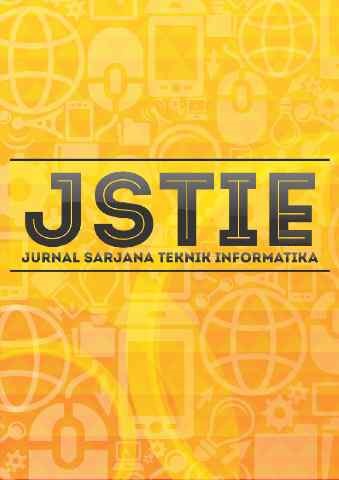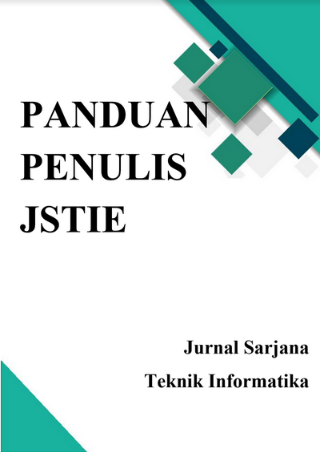Komparasi Fungsi Kernel Metode Support Vector Machine untuk Analisis Sentimen Instagram dan Twitter (Studi Kasus : Komisi Pemberantasan Korupsi)
DOI:
https://doi.org/10.12928/jstie.v9i2.20181Keywords:
Sentimen, KPK, kernel, SVM, akurasi,Abstract
Kinerja Komisi Pemberantasan Korupsi (KPK) yang bertugas memberantas korupsi di negeri pertiwi ini, tak jarang mendapat sorotan komentar dari berbagai kalangan masyarakat. Komentar positif, negatif maupun netral menghiasi kolom komentar di twitter maupun di instagram. Karena kolom komentar di twitter dan instagram tidak dapat mengelompokkan komentar berdasarkan jenis sentimennya (positif, negatif, atau netral) maka diperlukan sebuah sistem analisis sentimen yang dapat mengolompokkan komentar berdasarkan sentimennya. Penelitian sebelumnya yang dilakukan oleh Nooraeni, dkk (2020) tentang analisis sentimen data twitter mengenai isu RUU KPK dengan metode Support Vector Machine menggunakan kernel RBF menghasilkan akurasi sebesar 81.32%, presisi sebesar 71.47%, dan recall sebesar 87.64%. Tujuan dari penelitian ini yaitu menerapkan dengan membandingkan kernel linier, kernel polinomial dan kernel sigmoid pada metode Support Vector Machine untuk klasifikasi analisis sentimen serta menghitung tingkat akurasi, presisi, dan recall pada tiga jenis kernel (kernel linier, kernel polinomial dan kernel sigmoid) untuk klasifikasi analisis sentimen. Penelitian ini menggunakan metode Support Vector Machine sebagai algoritma untuk menganalisis sentimen dengan membandingkan kinerja tiga jenis kernel (kernel linier, kernel polinomial dan kernel sigmoid) sebagai salah satu parameter yang dapat digunakan untuk meningkatkan akurasi metode Support Vector Machine. Hasil penelitian ini didapatkan bahwa kernel linier memiliki akurasi tertinggi sebesar 83.06%, presisi sebesar 91.04%, dan recall sebesar 89.70%, untuk kernel polinomial memiliki akurasi sebesar 81.45%, presisi sebesar 88.57%, dan recall sebesar 91.17% sedangkan kernel sigmoid memiliki akurasi sebesar 79.83%, presisi sebesar 91.93%, dan recall sebesar 83.82%.
References
Putra, M. F., Herdiani, A., Puspandari, D., Informatika, F., & Telkom, U. (2019). Analisis Pengaruh Normalisasi , TF-IDF , Pemilihan Feature-set Terhadap Klasifikasi Sentimen Menggunakan Maximum Entropy ( Studi Kasus : Grab dan Gojek ). 6(2), 8520–8529.
Gormantara, A. (2020). Analisis Sentimen Terhadap New Normal Era di Indonesia pada Twitter Analisis Sentimen Terhadap New Normal Era di Indonesia pada Twitter Menggunakan Metode Support Vector Machine. July, 0–5.
Budi, S. (2017). Text Mining Untuk Analisis Sentimen Review Film Menggunakan Algoritma K-Means. Techno.Com, 16(1), 1–8. https://doi.org/10.33633/tc.v16i1.1263
H.R, R. T., Wardoyo, A. E., & Pratama, M. R. (2018). Analisis Sentimen Pada Twitter Terhadap Kinerja Komisi Pemberantasan Korupsi (KPK) di Indonesia Dengan Metode Naive Bayes. Undergraduate Thesis, UNIVERSITAS MUHAMMADIYAH JEMBER., 7(5), 842
Utami, L. D., & Wahono, R. S. (2015). Integrasi Metode Information Gain untuk Seleksi Fitur dan AdaBoost untuk Mengurangi Bias pada Analisis Sentimen Review Restoran Menggunakan Algoritma Naive Bayes. Journal of Intelligent Systems, 1(2), 120–126.
Nooraeni, R., Sariyanti, H. D., Iskandar, A. F. F., Munawwaroh, S. F., Pertiwi, S., & Ronaldias, Y. (2020). Analisis Sentimen Data Twitter Mengenai Isu RUU KPK Dengan Metode Support Vector Machine (SVM). Paradigma - Jurnal Komputer Dan Informatika, 22(1), 55–60. https://doi.org/10.31294/p.v22i1.6869
Indrayuni, E. (2018). Komparasi Algoritma Naive Bayes Dan Support Vector Machine Untuk Analisa Sentimen Review Film. Jurnal Pilar Nusa Mandiri, 14(2), 175. https://doi.org/10.33480/pilar.v14i2.918
Purnawan, I. K. (2015). Support Vector Machine Pada Information Retrieval.
Joachims, T. (2001). LEARNING TO CLASSIFY TEXT USING SUPPORT VECTOR MACHINES Methods, Theory, and Algorithms.
Diani, R., Wisesty, U. N., & Aditsania, A. (2017). Analisis Pengaruh Kernel Support Vector Machine (SVM) pada Klasifikasi Data Microarray untuk Deteksi Kanker. Indonesian Journal on Computing (Indo-JC), 2(1), 109. https://doi.org/10.21108/indojc.2017.2.1.169
Suyanto. (2018). Machine Learning Tingkat Dasar dan Lanjut. Penerbit Informatika.
Hsu, C.-W., Chang, C.-C., & Lin, C.-J. (2016). A Practical Guide to Support Vector Classification. Theory, Culture and Society, 17(1), 1–16. https://doi.org/10.1177/02632760022050997
Géron, A. (2019). Hands-on ML with Scikit-Learn, Keras & TF by Aurelien Geron. O’Reilly Media, Inc.
Al-Mejibli, I. S., Alwan, J. K., & Abd, D. H. (2020). The effect of gamma value on support vector machine performance with different kernels. International Journal of Electrical and Computer Engineering, 10(5), 5497–5506. https://doi.org/10.11591/IJECE.V10I5.PP5497-5506
Nugroho, A. S., Witarto, A. B., & Handoko, D. (2003). Support Vector Machine –Teori dan Aplikasinya dalam Bioinformatika. Proceeding of Indonesian Scientific Meeting in Central Japan, 2003. https://doi.org/10.1109/CCDC.2011.5968300
Awad, M., & Khanna, R. (2015). Efficient learning machines: Theories, concepts, and applications for engineers and system designers. In Efficient Learning Machines: Theories, Concepts, and Applications for Engineers and System Designers (Issue May 2016). https://doi.org/10.1007/978-1-4302-5990-9
Nanda, M. A., Seminar, K. B., Nandika, D., & Maddu, A. (2018). A comparison study of kernel functions in the support vector machine and its application for termite detection. Information (Switzerland), 9(1). https://doi.org/10.3390/info9010005
Ben-Hur, A., & Weston, J. (2010). A user’s guide to support vector machines. Methods in Molecular Biology (Clifton, N.J.), 609(June), 223–239. https://doi.org/10.1007/978-1-60327-241-4_13
Kowalczyk, A. (2017). Support Vector Machines Succintctly, Syncfusion. Succinctly E-Book Series, 114. www.syncfusion.com.
Kim, E. (2014). Everything You Wanted to Know about the Kernel Trick So , What is a Kernel Anyway ? Linear SVM , Binary Classification. 1, 1–11.
Jayanti, N. K. D. A., Novianti, K. D. P., & Sumalya, I. W. (2017). Implementasi Metode Support Vector Machine Pada Sistem Pengenalan Jejaitan. Seminar Nasional Teknologi Informasi Dan Multimedia, 163–168.
Downloads
Published
Issue
Section
License
License and Copyright Agreement
In submitting the manuscript to the journal, the authors certify that:
- They are authorized by their co-authors to enter into these arrangements.
- The work described has not been formally published before, except in the form of an abstract or as part of a published lecture, review, thesis, or overlay journal. Please also carefully read Journal Posting Your Article Policy.
- The work is not under consideration for publication elsewhere.
- The work has been approved by all the author(s) and by the responsible authorities – tacitly or explicitly – of the institutes where the work has been carried out.
- They secure the right to reproduce any material that has already been published or copyrighted elsewhere.
- They agree to the following license and copyright agreement.
Copyright
Authors who publish with Jurnal Sarjana Teknik Informatika agree to the following terms:
- Authors retain copyright and grant the journal right of first publication with the work simultaneously licensed under a Creative Commons Attribution License (CC BY-SA 4.0) that allows others to share the work with an acknowledgement of the work's authorship and initial publication in this journal.
- Authors are able to enter into separate, additional contractual arrangements for the non-exclusive distribution of the journal's published version of the work (e.g., post it to an institutional repository or publish it in a book), with an acknowledgement of its initial publication in this journal.
- Authors are permitted and encouraged to post their work online (e.g., in institutional repositories or on their website) prior to and during the submission process, as it can lead to productive exchanges, as well as earlier and greater citation of published work.








